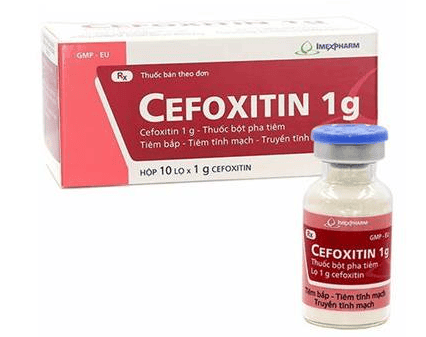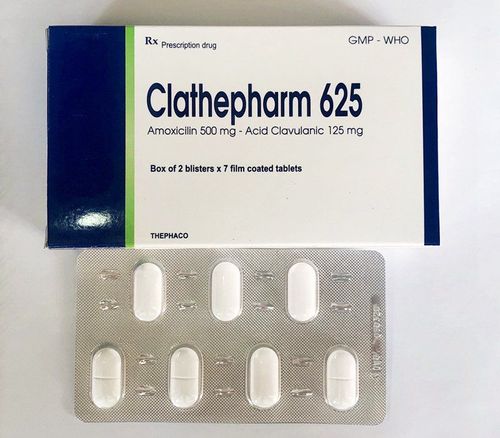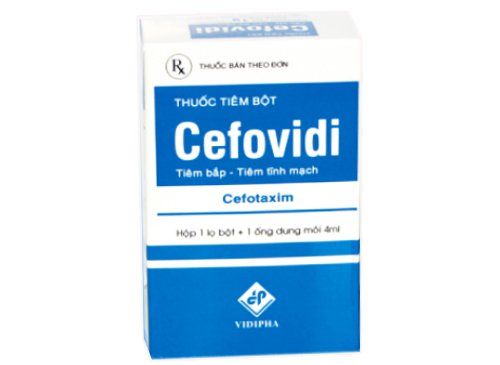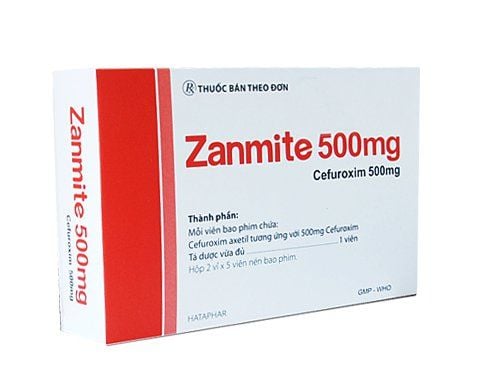This is an automatically translated article.
Cefovidi belongs to the group of antiparasitic, anti-infective, antiviral and antifungal drugs with the main ingredient being cefotaxime. The drug is often indicated for the treatment of bone and joint infections, pericarditis, meningitis, or skin and soft tissue infections.1. What is Cefovidi?
Cefovidi drug has the main ingredient is cefotaxime belonging to 3rd generation cephalosporin antibiotics, has a broad antibacterial spectrum that is usually sensitive to bacteria such as Enterobacter, E.coli, Serratia, Shigella, Salmonella, P. mirabilis, P.vulgaris, Haemophilus influenzae, Haemophilus spp... Indications of the drug Cefovidi in the following cases:
Septicemia Bone and joint infections Pericarditis caused by gram (+) and gram (-) bacteria Meningitis Skin and tissue infections soft, intra-abdominal, gynecological and obstetrics, lower respiratory tract, urology, gonorrhea Prophylactic antibiotics After surgery Regarding the pharmacokinetics, cefotaxime is rapidly absorbed after parenteral administration, distributed about 40% bound to plasma proteins. and widely distributed in tissues and fluids. The drug is partly metabolized in the liver to desacetyl cefotaxime and other inactive metabolites. The drug is eliminated mainly by the kidneys with about 40-60% unchanged form recovered in the urine.
2. Dosage of the drug Cefovidi
Depending on the subject and the purpose of use, the dose of Cefovidi selected will be different, specifically as follows:
For adults:
Uncomplicated infections: 1g/12 hours, intramuscularly or intravenously Severe infections, meningitis: 2g/6-8 hours, intramuscularly or intravenously Uncomplicated gonorrhea: 1g single dose, intramuscularly Prophylaxis of surgical infection: 1g, injected 30 minutes before surgery For Children:
Children 2 months or <12 years: 50-150mg/kg/day divided into 3-4 times intramuscularly or intravenously Preterm infants and neonates <7 days: 50 mg/kg/day, divided into 2 times, intravenously Especially for patients with renal failure with creatinine clearance <10m/min, the dose should be reduced by half. The dose of Cefovidi should be used accurately, without arbitrarily calculating, applying or changing the dose.
3. Be careful when using Cefovidi
Some unwanted effects that may occur when using Cefovidi include:
Fever, hypersensitivity reactions, eosinophilia Nausea, vomiting, abdominal pain or diarrhea, pseudomembranous colitis Hematologic changes Headache, dizziness, hallucinations Cardiac arrhythmia In addition, some contraindications of Cefovidi should also be noted, such as:
Patients with hypersensitivity to cephalosporins Pregnant and lactating women Be careful when taking cephalosporins. Using Cefovidi with penicillin-sensitive patients, kidney failure, the elderly, pregnant women, lactating women, children under 15 years old, people with liver failure, kidney failure or subjects with myasthenia gravis, stomach ulcers .
Above is important information on how to take the medicine, how to store it and how to use Cefovidi for each patient. Understanding will help the process to use more effectively while reducing risks to the patient's health.
Please dial HOTLINE for more information or register for an appointment HERE. Download MyVinmec app to make appointments faster and to manage your bookings easily.













